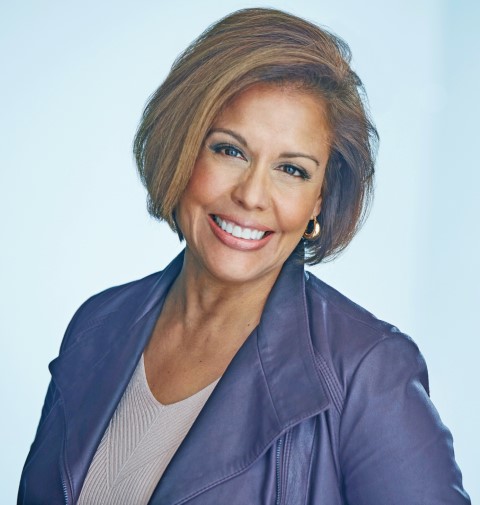Supreme Court Decision Brings Up Business Questions
By Diane Sears
Cover Spotlight

When the U.S. Supreme Court issued a ruling in June outlawing affirmative action in admissions at universities, business leaders wondered whether it would have a chilling effect on workplace diversity, equity and inclusion (DEI) efforts. Would it mean companies would need to eliminate or tone down their DEI and supplier diversity programs? Could it hinder small businesses that are certified as diverse-owned, including those recognized by the National LGBT Chamber of Commerce (NGLCC)?
“We realized there was a lot of confusion after the Supreme Court decision that was causing a freeze for certain organizations because they didn’t know exactly, ‘What does it mean? Does this mean I have to stop everything I’m doing, does it mean that what I’ve been doing has been illegal?’” says Michele Ruiz, CEO of BiasSync, which recently released a white paper to help businesses navigate these questions. “We felt it was really important to help organization leaders understand the significance of it and what was relevant.”
Titled “Navigating Diversity in 2023 & Beyond: After the Supreme Court’s Affirmative Action Ruling,” the 23-page white paper released in August summarizes the court ruling on two lawsuits filed by Students for Fair Admissions Inc. against Harvard University and the University of North Carolina. It also examines DEI data in the wake of the decision, offers strategies for the DEI employee journey and recommends appropriate use of affirmative action in workplaces.
The court’s ruling was complicated but in the end upheld that consideration of race as a factor in college admissions processes to achieve a diverse student body violates the Equal Protection Clause of the U.S. Constitution. The white paper summarizes the processes Harvard and UNC used in their admissions, and it outlines why the decision stated those processes violated the Equal Protection Clause.
“The opinion does not prohibit diversity efforts altogether,” the paper reads, “it prohibits any automatic racial preference as a basis for admission.” As a result of the decision, the paper says, some colleges have already revised their diversity efforts and are experimenting with “adversity” scores based on parental education and income.
“Although the decision does not apply to employment settings, and businesses are already legally prohibited from making hiring and work-related decisions based solely on race, the landmark ruling may cause some cautious employers to revamp or scale down their DEI programs,” the report reads. “Since last year, thousands of diversity-focused employees have been laid off, and some are attributing these layoffs to companies scaling back on their commitments to social justice, the subject Supreme Court case and the political target DEI has become.” The paper refers to a Wall Street Journal article from July titled “The Rise and Fall of the Chief Diversity Officer.”
The goal of the paper was to dissect what the decision means for higher education as well as what is applicable or not applicable to companies and employers. “I would say the biggest takeaway is, this is not the time to step back from diversity, equity inclusion and accessibility priorities,” Ruiz says. “In fact, you run the risk of being sued if you step back. You need to lean in, and we provide the legal basis for that in the white paper.”
Combating Unconscious Bias
BiasSync, based in Los Angeles, is dedicated to what it calls “conscious management of unconscious bias.” The consulting firm uses its proprietary bias assessment tools to produce data that helps organizations determine exactly where they might need to assist employees in changing behavior.
“Our purpose is to create more fair and respectful workplaces,” Ruiz says. “We do that by hyper-focused solutions on training for assessing, measuring and ultimately mitigating the negative impact of implicit bias in organizations. And when we say mitigating the impact, we’re not just talking about the ones that people most often think about, let’s say race and gender, but we also look at bias toward members of the LGBTQIA+ community.” The firm is working on additional areas of focus, including ableism, neurodiversity and age biases.
“When we looked at the marketplace as it pertains to diversity, equity, inclusion and now for accessibility solutions, we identified that the reason the majority of solutions don’t work for companies is because they focus on one step, which is training,” Ruiz says. “While there is a role for training for informational purposes, the research is very clear that training alone does not change behavior.”
If employees are trained and then six months go by and they’re faced with making a decision that could be affected by unconscious bias, they don’t necessarily remember what they had learned. Add to that the fact that unconscious bias can be heightened or triggered by factors like hunger, lack of sleep, or energy level because of the time of day, and the training does not kick in as designed.
BiasSync offers behavior change solutions that provide compelling educational content that relies on high-level storytelling — something between Netflix and “Dateline,” says Ruiz, who is herself a former television news journalist. The storytelling component is important because it leads to higher retention of the learnings and increases the desire to want to learn more to do better. It also increases awareness, helping people understand better where they are most likely to stereotype. “We all have biases,” Ruiz says. “It’s just a function of which ones and to what degree.”
There is also a factor called “intersectionality” that comes into play. “As an example,” she says, “I’m a Latina, so I might have a stronger racial bias versus a stronger gender bias — or I may identify with my identity as a woman more than my identity as a person of color.” Members of the LGBTQIA+ community who are also Black, for instance, would have the same kind of intersectionality when it comes to biases experienced by and against them.
BiasSync offers an assessment for people to learn more about themselves and where their unconscious biases are most likely to exist and brings them to consciousness using gaming techniques to make it more interesting and entertaining, as well as memorable.
Then it offers a type of heatmap for managers to be able to see where the organization’s trouble spots or gaps might lie, such as a certain type of bias that seems to be more prevalent in a single department. That way, training can be targeted instead of using what Ruiz calls a “peanut butter approach” that is spread liberally over all parts of the organization. The program offers employees short prompts to take actions that change their behavior — similar to health apps that prompt users to walk more steps by the end of the day or record their food intake.
It’s important to mitigate bias because it has a compounding effect that goes far beyond a single decision, Ruiz says. For instance, an opportunity is on the table and it’s awarded to the male candidate instead of the female because of an assumption that the woman has children and might not be able to travel as freely for her work. The male candidate gets the opportunity and continues to build up his credentials. “So now fast forward,” Ruiz says. “The time for a promotion occurs, and who looks better on paper based on what they’ve done and accomplished?”
Examining Supplier Diversity
“On the employment side, it has always been illegal to make decisions simply based on race,” Ruiz says. “That has been considered illegal for a long time. So that decision is not new. The Supreme Court decision was heavily focused on higher academia, and it wasn’t focused on employers, but the extrapolation for companies is that if you are making hiring decisions simply based on race — or gender, for that matter — that that would be considered illegal. That would have been challenged even before and will clearly potentially be challenged in the future.
“What that means is that as an employer, you need to focus on skill sets. If the person happens to be from a typically marginalized community, then that’s OK, but you can’t make the decision based solely on race.”
As for supplier diversity, someone could make the legitimate argument that if you’re just awarding a contract based on the owner’s race, gender or ethnicity, that potentially could be discriminatory, Ruiz says. But there is value to contracting with business owners who reflect to your consumer base.
By all accounts, there has been an uptick in parts of the nation in not just implicit but also explicit, very public, bias against some in the LGBTQIA+ community. Ruiz says she has especially noticed an increased bias against people who are transsexual. That is something to keep an eye on in the workplace as well as the supply chain, she says.
The white paper offers some tips that apply to both employers and supplier diversity professionals:
• Do not identify a concrete number or percentage of individuals from a specific demographic for purposes of hiring, promotion, training or development unless you have worked with your general counsel.
• Do not have policies that use the race or some other protected characteristic of individuals as a “tiebreaker” or “plus.”
• Do not ask recruiters or hiring managers to make decisions
about filling positions with individuals from specific demographic groups.
• Use survey data to help you figure out whether specific demographic groups feel a sense of inclusion and belonging, and tailor programs accordingly.
• Review U.S. Bureau of Labor Statistics’ current population survey to determine the percentage of talent available by occupation, gender, race and Hispanic or Latino ethnicity.
Widening Your Talent Pool
The key is to make sure the talent pool you’re drawing from is diverse, whether it’s for employees or suppliers, Ruiz says. The more diverse the pool, the more likely you are to find qualified candidates who also meet your DEI strategy.
The conversation about DEI is not going to go away anytime soon, especially since it has become part of the national debate and even a sticking point between political parties. That makes it even more important for companies of all sizes to maintain fair hiring, recruitment and sourcing processes, Ruiz says.
If you start with a candidate pool that has very little diversity, then you’re potentially hamstringing yourself, Ruiz says. “The research is very clear, that bias kicks in subjectively, not objectively. So if you list the actual requirements, then more often than not you can be more open to considering employees or potential employees who are diverse if you remove the subjective part.”
The other important point is to avoid the appearance of setting quotas. “That right there is a really red flag, and you definitely open yourself up to litigation,” Ruiz says. Instead, look for a wide diversity in gender, race, ability, sexual orientation, geographic location and other factors.
This is especially important for small business owners, who often hire people who are most like themselves. An LGBTQIA+ business needs diversity, too. It’s important to have people on your team who understand and can identify with your entire customer and supplier base.
The white paper gives this insight: “At each stage of the employee journey, DEI and HR professionals can implement strategy that will create fairness and equity for everyone and avoid leaving talented people from all backgrounds on the sidelines. Imagine the ideal DEI journey for every employee and all the policies, practices, and people that will need to work together to make it a fair, equitable, and inclusive experience.”




Leave A Comment